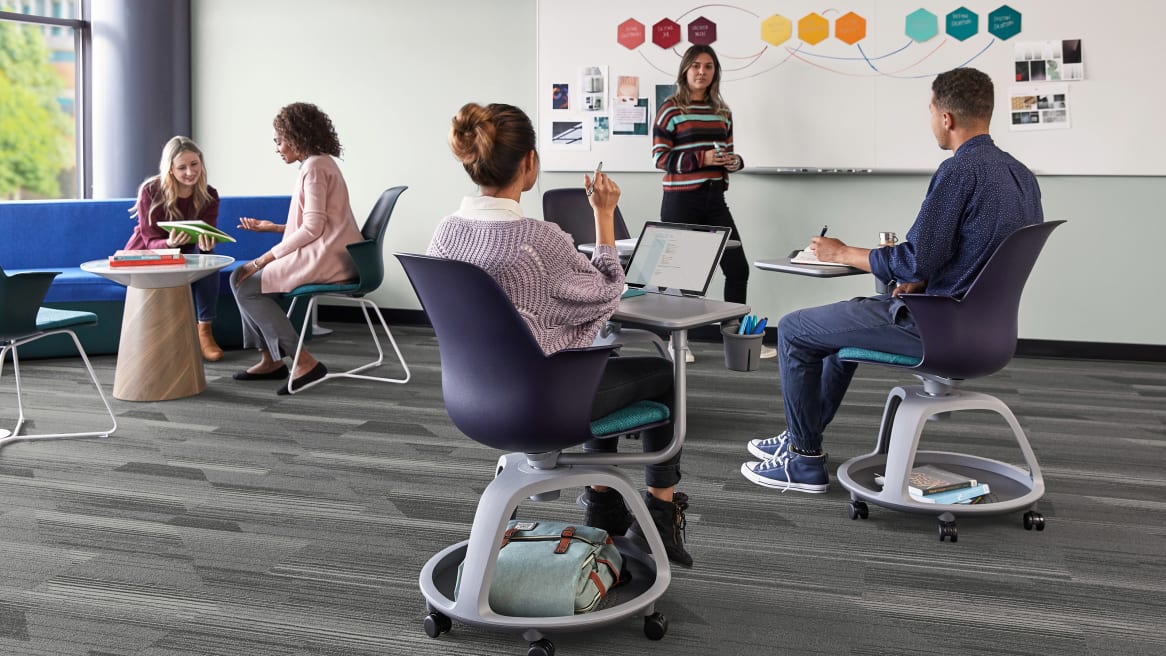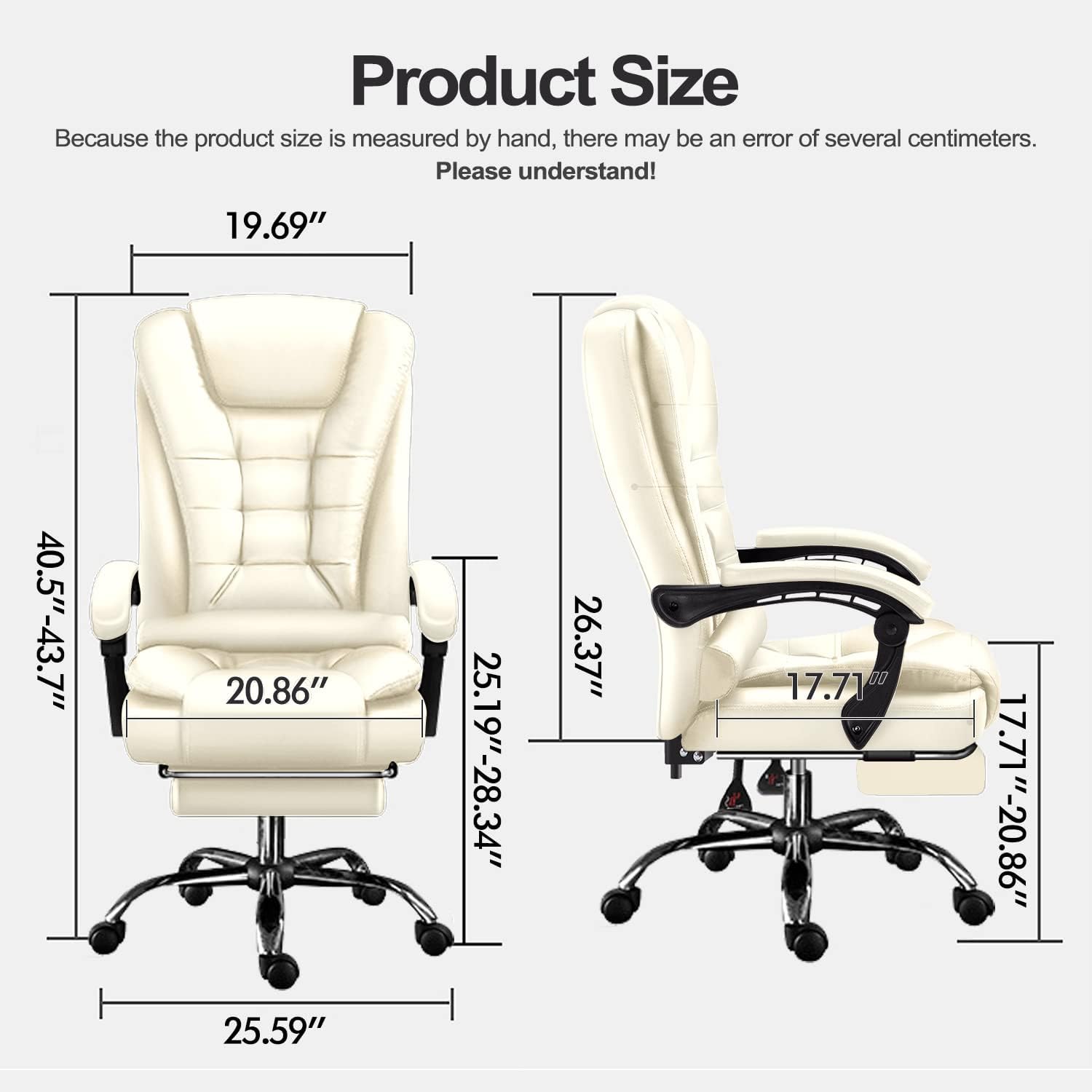The Importance of Upper Back Support in Desk Chairs: Desk Chair Upper Back Support

You spend a significant portion of your day sitting, whether it’s at work, school, or even just relaxing at home. The chair you choose can have a huge impact on your comfort, posture, and overall well-being. While many people focus on the comfort of their seat cushions, the upper back support is equally important. A good desk chair with proper upper back support can make a world of difference in your health and productivity.
The Impact of Poor Upper Back Support
Poor upper back support can lead to a variety of problems, affecting both your physical and mental health. A lack of support in the upper back can cause muscles to strain and fatigue, leading to discomfort, pain, and even injury. This can be exacerbated by long periods of sitting, making it a serious concern for anyone who works at a desk.
- Back Pain: A lack of support can cause your back to slouch, putting unnecessary strain on your spine and muscles. This can lead to chronic back pain, making it difficult to sit comfortably or engage in physical activities.
- Neck Pain: Poor posture can also lead to neck pain, as the head is forced to tilt forward to compensate for the lack of support. This can strain the neck muscles, leading to stiffness, headaches, and even dizziness.
- Reduced Productivity: When you’re uncomfortable, it’s hard to focus. Back and neck pain can distract you from your work, making it difficult to concentrate and be productive.
- Increased Risk of Injury: Slouching and poor posture can also put you at risk for more serious injuries, such as herniated discs or spinal stenosis.
The Benefits of Proper Upper Back Support
Proper upper back support can significantly improve your posture and reduce strain on your back and neck. This can lead to a range of benefits, from reducing pain and improving your physical health to boosting your mood and enhancing your productivity.
- Improved Posture: A chair with proper upper back support encourages you to sit upright, aligning your spine and reducing strain on your back muscles. Good posture not only reduces pain but also improves your appearance and confidence.
- Reduced Muscle Fatigue: Proper back support helps distribute your weight evenly, reducing the strain on your back muscles. This can lead to reduced fatigue and soreness, making it easier to sit for longer periods without discomfort.
- Improved Circulation: Slouching can restrict blood flow, leading to fatigue and discomfort. A good chair with upper back support encourages proper posture, improving circulation and reducing the risk of these problems.
- Increased Productivity: When you’re sitting comfortably and pain-free, you can focus better on your work. This can lead to increased productivity and improved performance.
- Reduced Stress: Back pain and discomfort can contribute to stress and anxiety. Proper upper back support can help reduce pain and improve your overall comfort, leading to a more relaxed and stress-free work environment.
Types of Upper Back Support in Desk Chairs

Providing adequate upper back support is crucial for maintaining good posture and reducing the risk of discomfort, pain, and injuries. There are several types of upper back support available in desk chairs, each with its own set of benefits and drawbacks.
Lumbar Support
Lumbar support is a feature designed to provide targeted support to the lower back, which is the natural curve in the spine. It helps to maintain proper spinal alignment and reduce strain on the back muscles.
- Adjustable Lumbar Support: These are often integrated into the backrest of the chair and can be adjusted to fit the user’s individual back shape and size. They can be moved up or down, and some even allow for adjustments to the degree of curvature.
- Removable Lumbar Support: These are separate cushions that can be attached to the backrest of the chair. They offer flexibility in terms of positioning and can be easily removed for cleaning or when not needed.
Headrests
Headrests are designed to provide support for the head and neck. They can help to reduce strain on the neck muscles and improve posture by keeping the head aligned with the spine.
- Adjustable Headrests: These headrests can be adjusted in height, angle, and sometimes even in depth to provide customized support. This is especially beneficial for people with varying heights or who prefer different levels of neck support.
- Fixed Headrests: These headrests are not adjustable and are usually designed to provide a specific level of support. They may be less versatile but can still be effective in providing support for the head and neck.
Adjustable Backrests, Desk chair upper back support
Adjustable backrests are designed to provide support for the entire back, from the lumbar region to the upper back. They allow users to customize the angle and position of the backrest to find the most comfortable and supportive position.
- Reclining Backrests: These backrests allow users to lean back and relax, reducing pressure on the spine and improving blood circulation. They are particularly beneficial for people who spend long hours sitting at a desk.
- Synchro-Tilt Backrests: These backrests are designed to move in sync with the seat, providing a more natural and comfortable sitting experience. They can help to maintain proper spinal alignment even when leaning back.
Comparison of Upper Back Support Features
| Type of Support | Features | Benefits |
|---|---|---|
| Lumbar Support | Provides targeted support to the lower back. Can be adjustable or removable. | Reduces strain on the back muscles. Improves spinal alignment. Prevents lower back pain. |
| Headrest | Supports the head and neck. Can be adjustable or fixed. | Reduces strain on the neck muscles. Improves posture. Prevents neck pain. |
| Adjustable Backrest | Supports the entire back. Allows for customization of angle and position. | Provides a comfortable and supportive sitting experience. Reduces pressure on the spine. Improves blood circulation. |
Choosing the Right Desk Chair with Upper Back Support

Choosing the right desk chair with upper back support is crucial for maintaining good posture and preventing discomfort, especially during long hours of sitting. This involves considering several factors and making informed decisions about the features and adjustability of the chair.
Factors to Consider When Choosing a Desk Chair with Upper Back Support
When selecting a desk chair with upper back support, consider these factors to ensure it meets your specific needs and preferences:
- Backrest Height and Shape: The backrest should be tall enough to support your entire upper back, extending to the shoulder blades. Look for a backrest that conforms to the natural curvature of your spine, providing lumbar support and promoting good posture.
- Adjustability: A good desk chair with upper back support will have adjustable features that allow you to customize the fit. This includes the ability to adjust the backrest height, angle, and lumbar support. Look for a chair that allows you to adjust the backrest height to match the natural curve of your spine, ensuring proper support.
- Material and Comfort: The backrest material should be breathable and comfortable to prevent sweating and discomfort. Consider chairs with mesh or breathable fabric backrests for optimal airflow and comfort. The padding should be firm enough to provide support without being too hard or too soft.
- Seat Depth and Height: Ensure the seat depth is sufficient to support your thighs without pressure on the back of your knees. The seat height should allow your feet to rest flat on the floor, with your knees bent at a 90-degree angle. Look for chairs with adjustable seat height to ensure a proper fit.
- Armrests: Armrests should be adjustable in height and width to support your arms comfortably and promote proper posture. They should be positioned so that your elbows are at a 90-degree angle when you are typing or using a mouse.
- Swivel and Tilt: A swivel base allows for easy movement, while a tilt mechanism allows you to recline slightly for added comfort. Look for a chair with a smooth and stable swivel base and a tilt mechanism that allows you to adjust the angle of the backrest to your preference.
- Durability and Warranty: Choose a chair made from high-quality materials and construction that will withstand regular use. Check the manufacturer’s warranty to ensure you are protected in case of defects or issues.
Determining the Appropriate Height and Adjustability
To determine the appropriate height and adjustability for optimal support, follow these steps:
- Sit in the chair with your feet flat on the floor and your knees bent at a 90-degree angle.
- Adjust the backrest height so that it supports your entire upper back, extending to your shoulder blades. The backrest should conform to the natural curvature of your spine, providing lumbar support and promoting good posture.
- Adjust the lumbar support to ensure proper support for your lower back.
- Adjust the armrests so that your elbows are at a 90-degree angle when you are typing or using a mouse.
Testing and Assessing Comfort and Functionality
To test and assess the comfort and functionality of a desk chair, consider the following:
- Sit in the chair for at least 15-20 minutes and move around in it. Pay attention to how the chair feels on your back, hips, and legs. Does the chair provide adequate support? Is the padding comfortable? Does the chair move smoothly and easily?
- Test the adjustability of the chair. Can you easily adjust the backrest height, angle, and lumbar support? Do the armrests adjust smoothly and comfortably?
- Consider the overall quality of the chair. Is the chair well-made? Are the materials durable and comfortable? Does the chair have a good warranty?
Desk chair upper back support – A good desk chair with upper back support is a must for anyone who spends long hours sitting. It can help prevent back pain and fatigue. If you’re looking for a chair that offers both comfort and support, you might want to check out a large comfy desk chair.
These chairs are designed to provide ample support for your back and shoulders, which can help you stay comfortable and focused throughout the day.
A good desk chair with upper back support is important for everyone, especially for growing children! When they’re spending time at their desks, it’s crucial to have a chair that provides the right support. That’s why a children’s computer desk and chair set is a great investment.
It ensures they have the right height and posture, which is key for healthy back development as they grow. Remember, a comfy chair makes all the difference for a happy and productive study session!